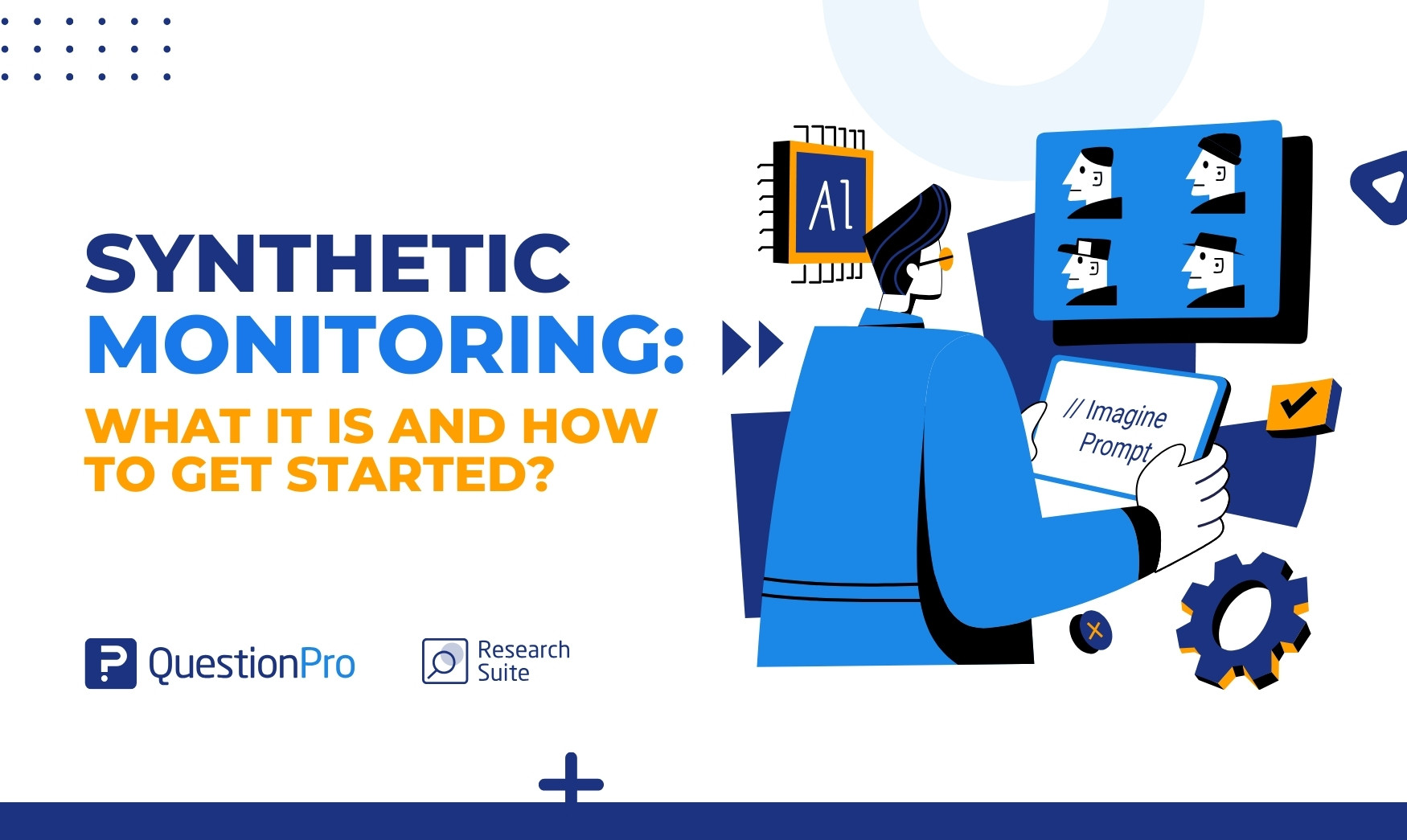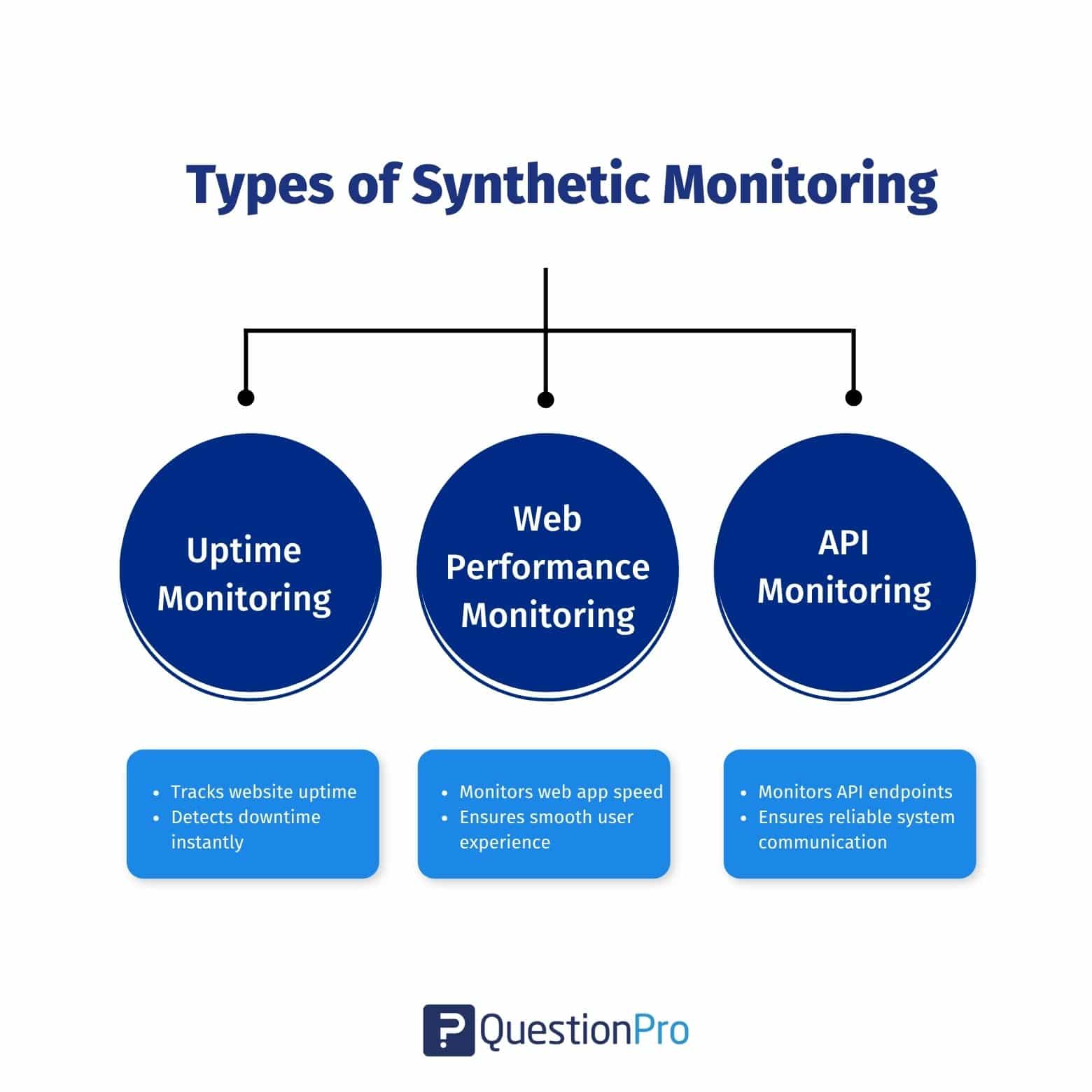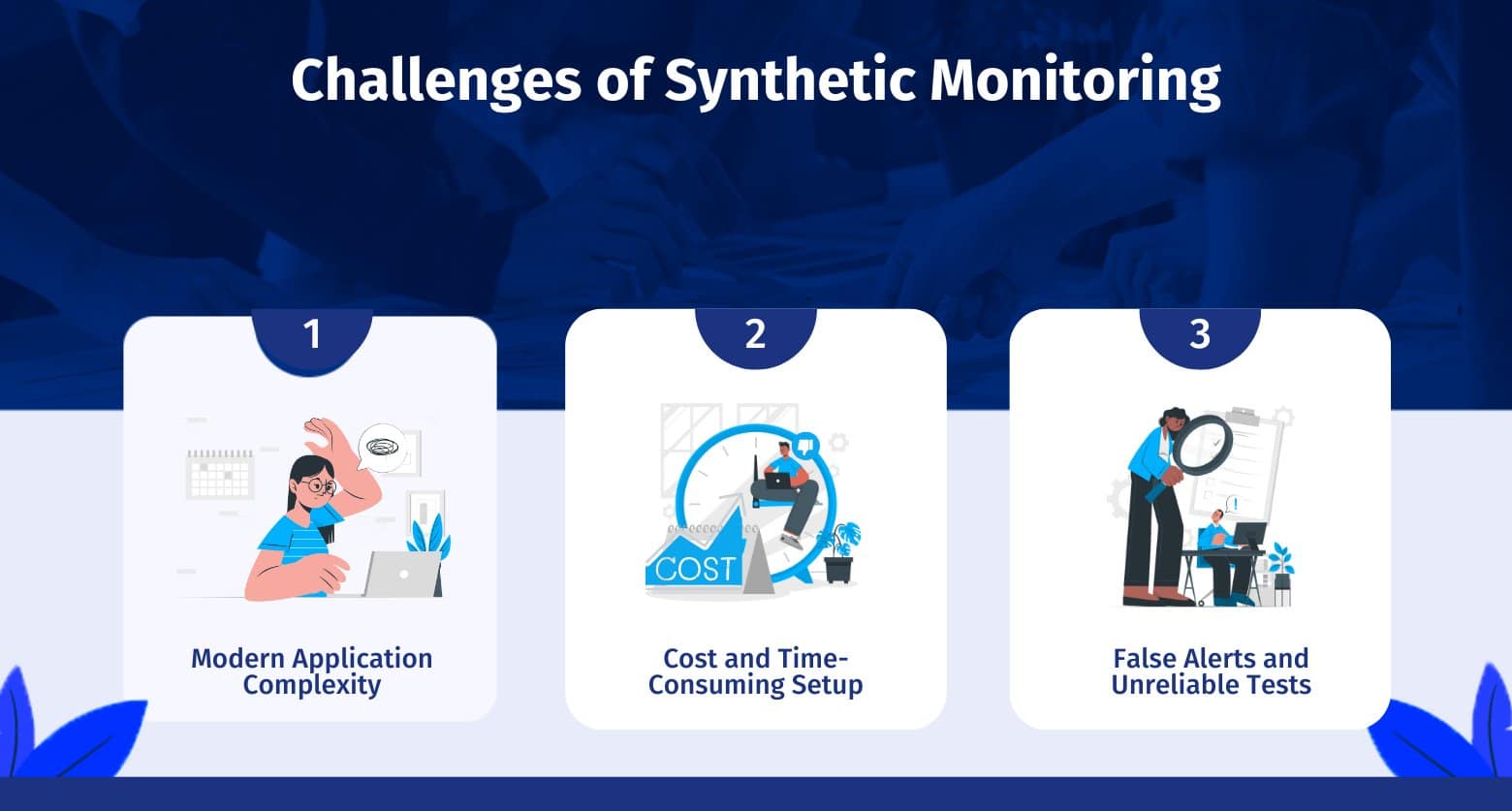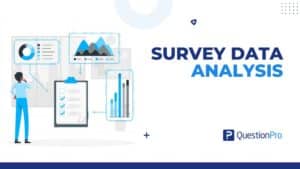
Your business needs to make sure your applications work well. Synthetic monitoring is a helpful tool that tells you how your apps are doing and how users are experiencing them. But what is it, and how can it help your organization stay competitive?
Let’s take a closer look at synthetic monitoring, including what it is, why it’s useful, the different kinds of monitoring, and how your business can start using it.
What is Synthetic Monitoring?
Synthetic monitoring is an effective way of evaluating application performance as it simulates user interactions, detects errors, and optimizes user experience. It also helps make sure your applications work smoothly. This kind of monitoring keeps an eye on your website and network resources and tells you if there are any issues.
This monitoring technique tests your applications by acting like a user and checking if they work as they should. It quickly spots any differences or problems by copying your typical actions. Synthetic monitoring provides valuable insights into:
- Application uptime
- User experience
- System outages
- Overall application performance.
Active Monitoring vs Passive Monitoring
When evaluating your application’s performance, there are two primary monitoring strategies to consider:
- Active Monitoring (Synthetic Monitoring)
- Passive Monitoring (Real User Monitoring or RUM)
Active monitoring uses scripted simulations to mimic user behavior. These synthetic tests help detect issues in your system before they affect real users.
Passive monitoring, on the other hand, captures and analyzes actual user interactions, offering a true-to-life view of how your application performs in the real world.
Both methods are particularly valuable during the early stages of development. By combining synthetic and real user monitoring, you can optimize performance, uncover key insights about user experience, and gain a detailed understanding of how your application behaves under real usage conditions.
Synthetic Testing and Its Importance
Synthetic testing is an important part of synthetic monitoring, and it has some key advantages for your applications and users. It involves making automated tests that act like you are using your apps. This helps your organization find problems before real users experience them. This proactive approach is crucial for keeping your apps running well and making your customers happy while saving time and money.
Here are the main points:
- Proactive Issue Detection: Synthetic testing catches issues early by pretending to be a user so you can fix them before they cause real problems.
- Enhanced Application Performance: You can make your apps faster and more dependable using synthetic testing results.
- Maximized Availability: Regular testing ensures your apps are always available, which means less downtime and a better reputation for your brand.
- Customer Satisfaction: Synthetic testing aims to give your users a great experience, which can make them more loyal and trusting.
- Efficiency and Cost Savings: Being proactive with monitoring helps you avoid expensive last-minute fixes and reduces the number of support requests.
How Does Synthetic Monitoring Work?
Synthetic monitoring is a method that checks how well your server is doing by using automated tests and markers. These tests create a starting point for performance measurements and help find any possible problems.
These automated synthetic monitoring tests, called scripted tests, can run over and over again when you make changes to your website or app. This way, you can always test in the same way and find and fix issues quickly. When you use transaction monitoring, you can keep your server’s performance top-notch and make your users happy.
Now, let’s explore how synthetic monitoring works:
Scripted Transactions
Scripted transactions are a crucial part of synthetic monitoring. They involve setting up automated scenarios that imitate how you use applications. These scripts copy actions such as logging in, searching for items, or buying things. This helps you regularly check if your applications are working as they should.
Simulated User Agents
Simulated user agents are an essential part of proactive monitoring. They precisely simulate numerous user agents, including different web browsers or mobile devices. Their role is to ensure that the application remains consistent across all platforms. This diverse range of user agents helps you find compatibility issues, delivering a smooth user experience for you and others on any device or browser.
Global and Internal Checkpoints
Synthetic monitoring relies on global and internal checkpoints to assess performance from different angles. These checkpoints are essential for a comprehensive evaluation.
- Global Checkpoints: These checkpoints assess system performance globally, which measures app performance across different geographical locations. This ensures that users worldwide experience optimal performance.
- Internal Checkpoints: Internal checkpoints focus on app performance monitoring within a specific geographical location. You can identify regional issues by assessing performance locally, ensuring peak performance for users in specific areas.
Alerting and Reporting
Effective alerting and reporting mechanisms are essential in synthetic monitoring. When synthetic tests detect issues or discrepancies, your alerting systems will promptly notify your IT or operations teams. You’ll also benefit from detailed reports and metrics, which will give you valuable insights into performance trends. These insights will empower you to make informed decisions and take corrective actions when necessary.
Baseline Performance Metrics
Baseline performance metrics are essential reference points that help you measure how your application is performing over time. These benchmarks are established by running synthetic tests under normal operating conditions and recording key indicators such as response time, page load speed, server availability, and transaction success rates.
By comparing current test results to these baselines, you can:
- Detect performance regressions caused by recent code changes or infrastructure updates
- Identify trends and anomalies that may signal deeper issues
- Set realistic performance goals for development and operations teams
- Evaluate the impact of optimizations or new feature rollouts
Regularly reviewing and updating your baseline metrics ensures your monitoring strategy stays relevant and aligned with evolving performance expectations. This practice is key to maintaining a high-performing, reliable, and user-friendly application.
Alerting and Reporting
Synthetic monitoring enables you to test your app’s operation and get alerted when something is wrong and affects user experience. Having strong alert and report features helps you know when there are problems so you can quickly fix them. Reports provide you with lots of information about how well things are working, which helps you make smart choices to improve your apps and user experiences.
Key Types of Synthetic Monitoring
Synthetic monitoring has three main types: uptime, web performance, and API monitoring. Each type specifically evaluates your application’s performance and ensures your users have the best experience.
Understanding these types and their roles allows you to implement a holistic monitoring strategy that covers all aspects of your application’s performance.

01. Uptime Monitoring
Uptime monitoring is a process that you can use to verify the availability of websites and services. It ensures their accessibility to your users. These monitoring services are designed to continuously monitor the availability and performance of your website, application, or server. It provides you with timely alerts and notifications in case of downtime or performance issues.
This enables you to take swift action to address any problems and minimize the impact on your users, which ultimately results in an enhanced customer experience and increased efficiency for your business.
2. Web Performance Monitoring
Web performance monitoring is all about checking how fast and responsive your web apps are. It helps you find problems and spot areas that need fixing. This monitoring keeps an eye on things like how long it takes for a webpage to load if the content shows up correctly, and if there are any times when the app is down. This helps ensure that your web apps work well and are available when needed.
Even though it can be tricky to monitor web performance because apps can be really complex and sometimes give false alarms, it’s super important for you to do it. This is because it helps keep you and your users happy by making sure everything runs smoothly and quickly.
3. API Monitoring
API monitoring is essential for ensuring that your APIs, which are crucial for seamless communication between different software components, are functioning correctly. It allows you to detect problems and ensure the smooth operation of your applications by checking API endpoints and performance.
This type of monitoring often includes:
- HTTP tests
- Browser tests
- SSL tests
- DNS tests
- Multistep API tests that verify specific workflows from start to finish
By using API monitoring, you can maintain the efficiency of your applications, ensuring they run smoothly and keep your users happy while optimizing the performance of your software.
Getting Started with Synthetic Monitoring
Getting started with synthetic monitoring is a crucial step in ensuring the reliability and performance of your digital services. This process involves selecting the right synthetic monitoring tool, creating synthetic tests, setting up alerting and reporting mechanisms, and interpreting test results. Let’s explore these essential steps to kickstart your monitoring journey and enhance your organization’s online presence.
Selecting a Synthetic Monitoring Tool
Choosing the right synthetic monitoring tool is the foundation of your monitoring strategy. The best synthetic monitoring tools provide a complete way to keep an eye on your applications. They use synthetic testing, real user monitoring, and other advanced features to ensure your applications run smoothly.
By checking out the top solutions in the market, businesses can pick the right monitoring tool to ensure their applications work well. When evaluating synthetic monitoring tools, pay attention to these key features:
- Ease of Use: A user-friendly interface simplifies test configuration and management.
- Scalability: Ensure the tool can handle your growing monitoring demands.
- Integration Capabilities: Look for seamless integration with other monitoring and incident management tools.
- Advanced Analytics: Access to advanced analytics enables deeper insights into performance issues.
Selecting the best tool ensures that you’re equipped to monitor and resolve issues effectively, ultimately leading to improved customer experiences and a competitive edge in your market. Additionally, customization options allow you to customize tests to your specific requirements.
Real-time alerts and notifications keep you informed about critical incidents, and comprehensive reporting and analytics help you track and analyze performance trends. You can confidently select the synthetic monitoring tools that best suit your needs by carefully considering these features.
Creating Synthetic Tests
Creating synthetic tests is a fundamental aspect of synthetic monitoring. These tests simulate user interactions with your applications or services. By doing so, you can proactively identify potential issues before they affect real users. This will guide you through the process of designing and configuring synthetic tests customized to your unique monitoring requirements.
Setting up Alerting and Reporting
Setting up alerting and reporting mechanisms is essential for real-time incident detection and response. These capabilities ensure that when issues arise, you’re promptly notified and have the data needed to investigate and resolve them effectively.
Interpreting Test Results
Your synthetic monitoring journey ends with test interpretation. It’s crucial to fully understand the data and insights your synthetic monitoring tools provide. This can help you understand test findings, detect performance trends, identify difficulties, and make data-driven decisions to improve your application’s speed and user experience.
Benefits of Implementing Synthetic Monitoring
Synthetic monitoring is very helpful for your business. It can help your business stay ahead and keep its apps running well if you know how to use it. The implementation of synthetic monitoring enables you to get numerous benefits for your organization. Here are some of the key advantages:
Proactive Problem Detection
Proactive problem detection is one of the key benefits of implementing synthetic monitoring. It helps you identify problems early, which ensures customer satisfaction and enhances overall performance. Synthetic monitoring lets you see how well your applications work and how users feel. This helps you make smart decisions and fix problems before they cause trouble.
This proactive approach enhances customer experience, minimizes downtime, and optimizes application performance.
Improved Customer Experience
Synthetic monitoring can help enhance your customer experience by ensuring optimal application performance and availability. You’ll enjoy various benefits from synthetic monitoring, including:
- Simulating your users’ interactions with your applications.
- Gaining valuable insights into your users’ experience.
- Making informed decisions to improve your services.
- Addressing potential issues before they impact your actual users.
Synthetic monitoring can elevate your overall application performance, providing a superior user experience. This leads to improved customer satisfaction, resulting in increased user engagement and higher customer retention rates.
Benchmarking and Optimization
Benchmarking and optimization are essential benefits of implementing synthetic monitoring. When you compare the performance of your products, services, or processes against industry leaders, you can identify performance gaps and areas for improvement.
This continuous improvement will enable your organization to optimize your application performance, ensuring you maintain a competitive edge in the market.
Challenges of Synthetic Monitoring
Despite its numerous benefits, you may face challenges with synthetic monitoring, such as the complexity of modern applications, the cost and time-consuming setup, and the potential for false alerts due to flaky tests.
These hurdles can impede your successful implementation of synthetic monitoring. It’s crucial for you to carefully select the right tools and strategies to overcome these obstacles and guarantee optimal application performance.

Modern Application Complexity
Modern applications are quite complex, which can make it tough to handle all possible problems for you. Developers can face challenges due to the intricate nature of software applications, with issues like managing dependencies, continuous updates, and various technologies and platforms.
To address these challenges, you need advanced monitoring solutions like availability monitoring. These solutions are essential in helping you manage the complexities of modern applications. These solutions offer visibility into how well applications and systems are performing.
Cost and Time-Consuming Setup
Setting up synthetic monitoring can be expensive and time-consuming for you and your organization. You’ll need to make careful choices when selecting the appropriate tools and strategies.
Synthetic monitoring demands a significant investment of money and time. It also requires expertise in coding and scripting languages. However, with proper planning and effective management of these setups, you can avoid potential revenue loss and budget more efficiently.
False Alerts and Unreliable Tests
False alerts and unreliable tests can cause unnecessary disruptions and waste your resources. You need dependable monitoring tools to avoid these issues. Reliable monitoring solutions, proper thresholds, and alert systems that can spot false alarms can help you reduce false alerts and unreliable tests for your business.
Enhancing Synthetic Monitoring with QuestionPro Survey Software
QuestionPro survey software can be a helpful tool for synthetic monitoring. It will help you collect feedback, opinions, and insights about your monitoring methods and user experience. Here’s how you can use QuestionPro for this purpose:
- User Experience Assessment: Organizations can create surveys to collect feedback from real users about their experiences with applications or websites being monitored synthetically. This feedback can help identify discrepancies between synthetic and real user monitoring results.
- Performance Benchmarking: You can use surveys to assess user perceptions of app performance, which allows your organization to establish benchmarks and compare them with synthetic monitoring data. This can help in fine-tuning monitoring strategies to align with user expectations.
- Issue Identification: Organizations can use surveys to gather information from users about any issues or problems they encounter while using an application. This user-reported data can complement synthetic data, providing a comprehensive view of app performance.
- Feature Prioritization: Surveys can help organizations understand which features or aspects of an application are most important to users. This information can guide synthetic monitoring efforts by focusing on critical user journeys and interactions.
- Tool Evaluation: Organizations can create surveys to collect feedback from their internal teams or IT staff regarding the effectiveness and usability of synthetic monitoring tools. This feedback can inform decisions about tool selection and optimization.
- Trend Analysis: Over time, you can use surveys to track changes in user perceptions and sentiments related to app performance. This longitudinal data can be compared with synthetic monitoring trends to identify correlations and areas for improvement.
Conclusion
Synthetic monitoring is important for checking how well your application works, finding problems, and ensuring your users have a good experience. When you use the right tools and plans, you can handle the difficulties of synthetic monitoring and stay competitive.
To ensure your apps run well and your users are happy, you should learn about the good things, different kinds, and problems of synthetic monitoring. You should also think about important features when picking monitoring tools. This way, you can keep your applications working great and make your users happy.
If you want to improve your monitoring strategy by using real user feedback or exploring synthetic data collection, QuestionPro can help. It offers solutions to enhance your decision-making and research in synthetic monitoring.
You can get started with a free trial today and see why many organizations trust QuestionPro to improve their synthetic monitoring and provide a great user experience.
Frequently Asked Questions (FAQs)
Answer: Synthetic monitoring is proactive and uses simulated tests, while real user monitoring (RUM) captures actual user interactions. Synthetic monitoring helps detect problems early, whereas RUM reflects real-world user behavior and performance.
Answer: Key benefits include proactive issue detection, improved application uptime, better user experience, cost savings, and detailed performance insights across devices and regions.
Answer: Modern apps are complex and require continuous testing to ensure reliability, performance, and scalability. Synthetic monitoring ensures consistent performance across browsers, locations, and devices.
Answer: Absolutely. Synthetic monitoring is especially useful in early development stages, where proactive testing can prevent performance issues and improve customer satisfaction from day one.
Answer: It depends on your application. Many businesses run synthetic tests every few minutes to ensure real-time visibility, especially for mission-critical services.







